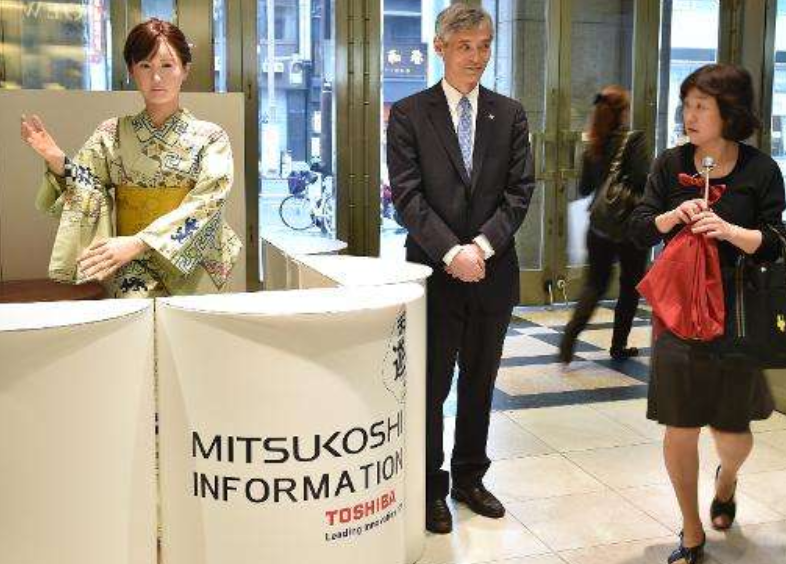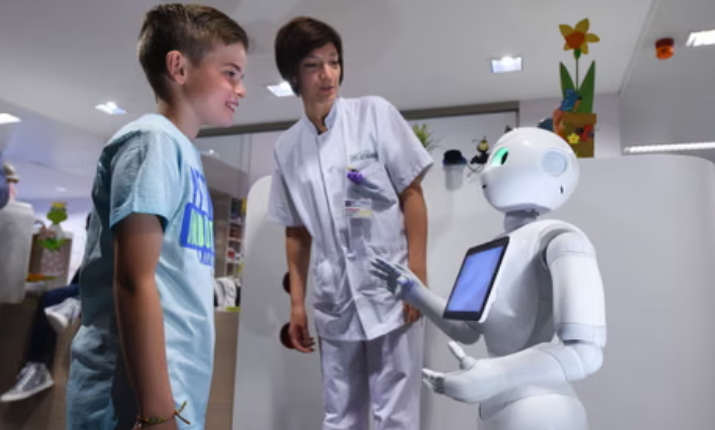Canva's AI image generator has revolutionised the way creators, marketers, and businesses approach visual content creation. This powerful tool combines artificial intelligence with Canva's intuitive design platform, allowing users to generate unique, professional-quality images from simple text prompts. Whether you're creating social media content, marketing materials, or personal projects, mastering Canva's AI capabilities can significantly enhance your creative workflow and help you produce stunning visuals without advanced design skills.
What is Canva AI Image Generator?
The Canva AI image generator is an artificial intelligence-powered tool that creates unique images based on textual descriptions provided by users. This feature integrates multiple AI technologies, including DALL·E by OpenAI and Imagen by Google Cloud, to transform your creative ideas into visual reality . The tool goes beyond traditional stock photography by generating completely original artwork that matches your specific requirements and brand aesthetics.
Unlike conventional design tools that require extensive technical knowledge, Canva's AI generator democratises image creation by making it accessible to users of all skill levels. The platform's AI technology analyses your text prompts and generates multiple image variations, giving you creative options to choose from. This revolutionary approach eliminates the need for expensive stock photography subscriptions or complex design software, making professional-quality visual content creation accessible to everyone.
Key Benefits of Canva AI Image Generator
Cost-effective solution for original visual content
Time-saving automation for busy professionals
Unlimited creative possibilities with text prompts
Brand consistency through customisable parameters
Multiple AI models for diverse artistic styles
Getting Started with Canva AI Image Generator
To begin using the Canva AI image generator, you'll need to access the feature through your Canva account. The tool is available across different Canva pricing plans, with varying levels of access and generation limits. Understanding the setup process ensures you can maximise your creative potential from the very first use.
Step 1: Access the AI Image Generator
Navigate to your Canva dashboard and look for the 'Apps' section or search for 'Text to Image' in the search bar. The AI image generator appears as multiple options including Text to Image, DALL·E, and Imagen, each offering slightly different capabilities and styles. The interface is designed to be intuitive, with clear navigation paths that guide users through the image generation process seamlessly.
Once you've located the AI tools, you'll notice different categories and specialisations. Some tools excel at photorealistic imagery, whilst others focus on artistic interpretations or specific design styles. Understanding these distinctions helps you choose the most appropriate tool for your particular project requirements.
Step 2: Choose Your Canvas Size and Format
Before generating images, select the appropriate canvas size for your project. Whether you're creating Instagram posts, Facebook covers, LinkedIn banners, or custom dimensions, choosing the right size ensures your AI-generated images fit perfectly into your design layout. Canva offers preset dimensions for popular social media platforms, marketing materials, and print formats.
Consider the final application of your image when selecting dimensions. Square formats work excellently for Instagram posts, whilst rectangular formats suit Facebook covers or website headers. The platform also supports custom dimensions for specialised applications such as email headers, presentation slides, or print materials.
Step 3: Craft Effective Text Prompts
The quality of your generated image heavily depends on your text prompt construction. Be specific and descriptive when writing your prompts, incorporating details about composition, lighting, colour schemes, and artistic styles. Instead of 'dog,' try 'golden retriever sitting in a sunny garden with colourful flowers, soft natural lighting, professional photography style.' The more detailed your description, the better the AI can understand and create your vision.
Prompt Engineering Best Practices
Include specific details about subjects, settings, and atmosphere
Specify artistic styles such as 'watercolour,' 'digital art,' or 'photorealistic'
Mention lighting conditions like 'golden hour,' 'studio lighting,' or 'natural daylight'
Describe colour palettes using terms like 'vibrant,' 'muted,' or specific colour names
Add composition elements such as 'close-up,' 'wide shot,' or 'bird's eye view'
Step 4: Select AI Model and Style Preferences
Canva offers different AI models for image generation, each with unique strengths and characteristics. DALL·E excels at creative and artistic interpretations, producing imaginative results that blend reality with artistic flair. Imagen focuses on photorealistic results, creating images that closely resemble professional photography. Understanding these distinctions helps you choose the model that best matches your project's aesthetic requirements.
The selection process involves considering your target audience, brand guidelines, and intended use case. Corporate presentations might benefit from clean, professional imagery generated through Imagen, whilst creative marketing campaigns could leverage DALL·E's artistic capabilities for more engaging, eye-catching visuals.
Step 5: Generate, Review, and Refine
Click the generate button and wait for the AI to process your request. The system typically produces multiple variations of your prompt, allowing you to select the image that best fits your needs. Processing times vary depending on complexity and current system load, but most generations complete within 30-60 seconds.
If you're not satisfied with the initial results, refine your prompt by adding more specific details or adjusting the style parameters. The iterative process of prompt refinement often leads to better results as you learn to communicate more effectively with the AI system.
Advanced Features and Professional Techniques
The Canva AI image generator offers several advanced features that can enhance your creative process significantly. Magic Design integration allows you to combine AI-generated images with pre-designed templates, creating cohesive designs automatically. This feature streamlines the design process by suggesting complementary layouts, typography, and colour schemes that work harmoniously with your generated imagery.
Brand Integration and Consistency
For businesses and professional creators, maintaining brand consistency across all visual materials is crucial. The Canva AI generator can be configured to work within your brand guidelines, incorporating specific colour palettes, visual styles, and thematic elements that align with your brand identity. This ensures that all generated content maintains professional consistency whilst still offering creative variety.
Develop a comprehensive prompt library that includes your brand colours, preferred artistic styles, and visual elements. This systematic approach ensures that all your AI-generated content maintains a cohesive look across different projects, platforms, and campaigns.
Batch Generation and Workflow Optimisation
Professional users can optimise their workflow by planning multiple image generations in advance. Create a series of related prompts for campaign materials, social media content, or presentation slides. This batch approach maximises efficiency and ensures visual consistency across related materials.
Professional Workflow Tips
Plan prompt variations for different formats and platforms
Create template prompts for recurring content types
Maintain prompt libraries organised by project or client
Document successful combinations for future reference
Test different AI models for optimal results
Pricing Plans and Feature Comparison
Understanding Canva's pricing structure is essential for maximising your use of the AI image generator. The platform offers multiple tiers designed to accommodate different user needs, from casual creators to enterprise-level organisations. Each plan includes different allocation limits for AI generation credits, affecting how frequently you can create new images.
| Plan Type | AI Credits Monthly | Monthly Cost | Best For |
|---|---|---|---|
| Free | 25 credits | £0 | Casual users, testing |
| Pro | 500 credits | £10.99 | Individual professionals |
| Teams | 1000+ credits | £13.99 per person | Small teams, agencies |
| Enterprise | Custom allocation | Custom pricing | Large organisations |
Credit Management and Optimisation
Effective credit management ensures you maximise the value of your subscription. Monitor your monthly usage patterns and adjust your plan accordingly. Pro users receive substantial credit allocations that typically satisfy most individual professional needs, whilst Teams plans offer enhanced collaboration features alongside increased generation limits.
Consider upgrading during high-activity periods such as campaign launches or seasonal content creation. The flexibility of Canva's subscription model allows for plan adjustments based on changing requirements, ensuring cost-effectiveness throughout different business cycles.
Creative Applications and Use Cases
The versatility of Canva's AI image generator extends across numerous industries and applications. Marketing professionals utilise the tool for creating engaging social media content, email headers, and advertising materials. Educational institutions leverage AI generation for creating illustrative content, presentation materials, and learning resources.
Social Media Content Creation
Social media managers find particular value in the AI generator's ability to create platform-specific content quickly. Generate Instagram story backgrounds, Facebook post imagery, LinkedIn article headers, and Twitter promotional graphics using targeted prompts that align with each platform's aesthetic requirements and audience expectations.
The tool excels at creating seasonal content, trending topic illustrations, and brand-specific imagery that maintains consistency across multiple social platforms. This capability significantly reduces content creation time whilst ensuring high-quality, engaging visuals that drive audience engagement.
Business and Professional Applications
Corporate users leverage AI-generated imagery for presentations, reports, website headers, and marketing collateral. The professional quality of generated images eliminates the need for expensive stock photography subscriptions whilst providing unique, brand-aligned visuals that differentiate your materials from competitors.
Industry-Specific Applications
E-commerce: Product mockups, lifestyle imagery, promotional graphics
Education: Illustrative content, presentation slides, learning materials
Healthcare: Informational graphics, wellness imagery, patient education materials
Real Estate: Property lifestyle images, marketing brochures, virtual staging concepts
Technology: Concept illustrations, user interface mockups, technical documentation
Troubleshooting Common Challenges
Users often encounter specific challenges when working with AI image generators. Understanding common issues and their solutions helps maintain productive workflows and achieve consistent results. Most problems stem from prompt construction, expectation management, or technical limitations rather than fundamental tool deficiencies.
Improving Generation Quality
Inconsistent results can be addressed by refining prompt specificity and understanding each AI model's strengths and limitations. If generated images don't match your vision, try breaking down complex scenes into simpler components or adjusting the descriptive language to be more precise and actionable.
Quality concerns often resolve through experimentation with different AI models within Canva's platform. Some models excel at photorealistic images, whilst others perform better with artistic or stylised content. Understanding these distinctions helps you select the most appropriate tool for each specific requirement.
Technical Limitations and Workarounds
Current AI technology has inherent limitations regarding text rendering, complex compositions, and specific brand element reproduction. Work around these limitations by generating base imagery and adding text, logos, or detailed elements using Canva's traditional design tools.
For complex multi-element compositions, consider generating individual components separately and combining them using Canva's layering and editing capabilities. This approach often produces better results than attempting to generate everything in a single prompt.
Future Developments and Industry Trends
The landscape of AI-powered design tools continues evolving rapidly, with significant improvements in image quality, generation speed, and creative capabilities. Canva regularly updates its AI technologies, introducing new models, features, and integrations that expand creative possibilities for users across all skill levels.
Emerging Technologies and Capabilities
Future developments include enhanced prompt understanding, improved brand integration capabilities, and more sophisticated artistic style controls. These advancements will further democratise professional-quality design creation, making advanced visual communication accessible to broader audiences.
Integration with other emerging technologies such as augmented reality, interactive media, and personalised content generation represents the next frontier in AI-powered creative tools. These developments will transform how businesses and individuals approach visual communication and brand expression.
Industry Impact and Adoption Trends
The widespread adoption of AI image generation tools is reshaping creative industries, marketing practices, and content creation workflows. Businesses are increasingly incorporating AI-generated visuals into their standard operating procedures, recognising the efficiency gains and creative possibilities these tools provide.
Educational institutions are beginning to integrate AI image generation into design curricula, preparing the next generation of creative professionals for an AI-enhanced creative landscape. This shift represents a fundamental change in how visual content is conceptualised, created, and deployed across various media.
Best Practices for Long-term Success
Developing sustainable practices with Canva's AI image generator requires understanding both the technology's capabilities and your specific creative requirements. Establish systematic approaches to prompt development, result evaluation, and workflow integration that support consistent, high-quality output.
Building Your Creative Workflow
Create standardised processes for different types of projects, maintaining prompt libraries organised by style, purpose, and effectiveness. Document successful combinations and continuously refine your approach based on results and changing requirements.
Regular experimentation with new features, models, and techniques ensures you stay current with platform developments and maintain competitive advantages in your creative work. The AI landscape evolves rapidly, making continuous learning essential for maximising tool effectiveness.
Long-term Success Strategies
Maintain organised prompt libraries for different project types
Document successful techniques and effective combinations
Stay updated with new features and model improvements
Experiment regularly with different approaches and styles
Integrate AI generation with traditional design skills
Build feedback loops to continuously improve results
Conclusion
Mastering the Canva AI image generator opens unlimited creative possibilities for designers, marketers, content creators, and business professionals. By understanding the tool's capabilities, crafting effective prompts, implementing best practices, and staying current with technological developments, you can produce professional-quality visuals that enhance your projects and engage your target audiences effectively.
The combination of artificial intelligence technology with Canva's user-friendly interface makes high-quality image generation accessible to everyone, regardless of their design experience or technical background. This democratisation of creative tools represents a significant shift in how visual content is created, distributed, and utilised across various industries and applications.
Success with AI image generation requires patience, experimentation, and systematic approach development. Start with simple projects to build familiarity with the tools, gradually expanding to more complex applications as your skills and understanding develop. The investment in learning these technologies pays dividends through improved efficiency, enhanced creative capabilities, and expanded professional opportunities.
As AI technology continues advancing, early adopters who master these tools now will maintain significant advantages in their respective fields. Begin experimenting with different prompts, techniques, and applications today to discover how this powerful technology can transform your creative workflow and help you achieve your visual communication objectives more effectively than ever before.






